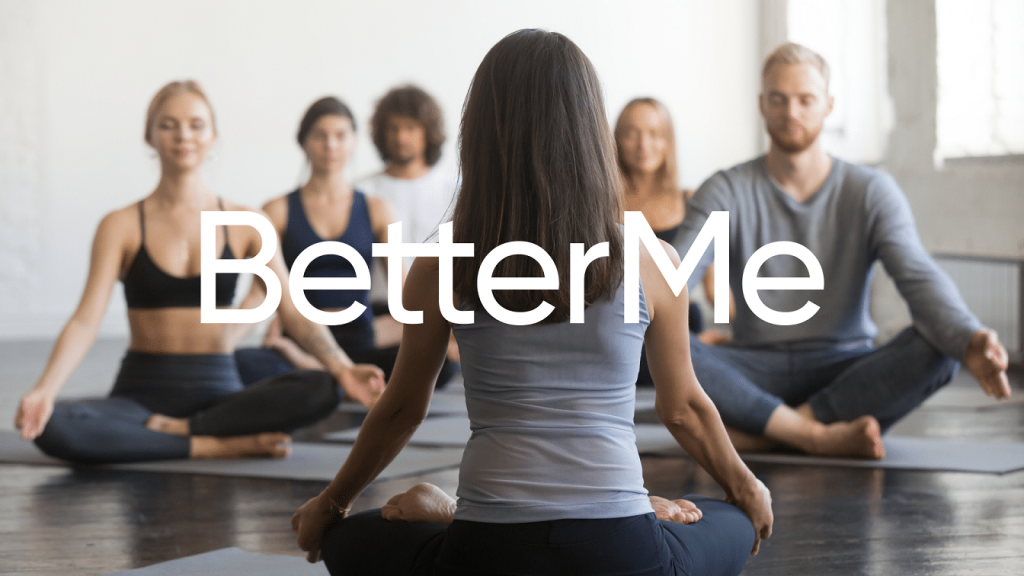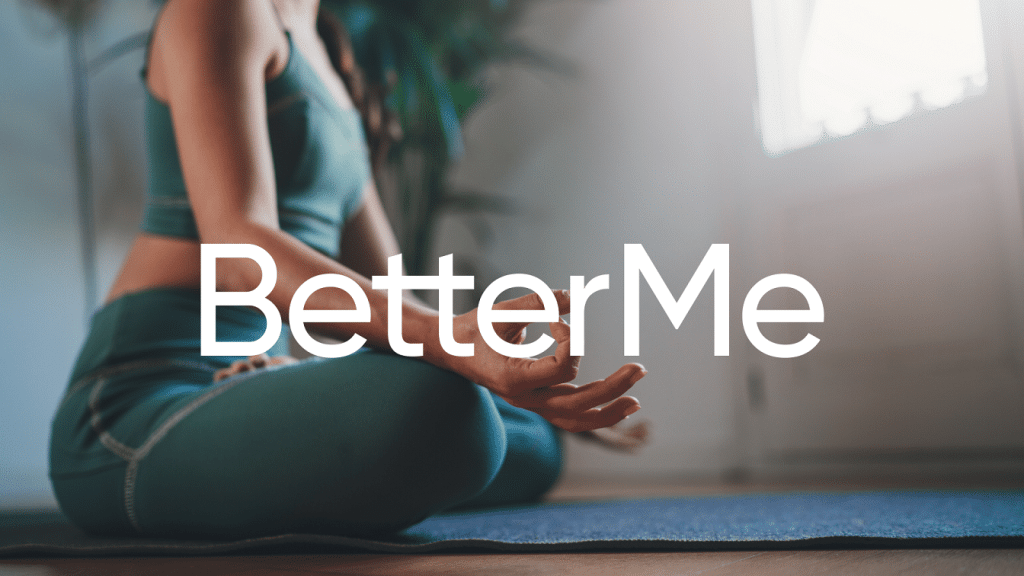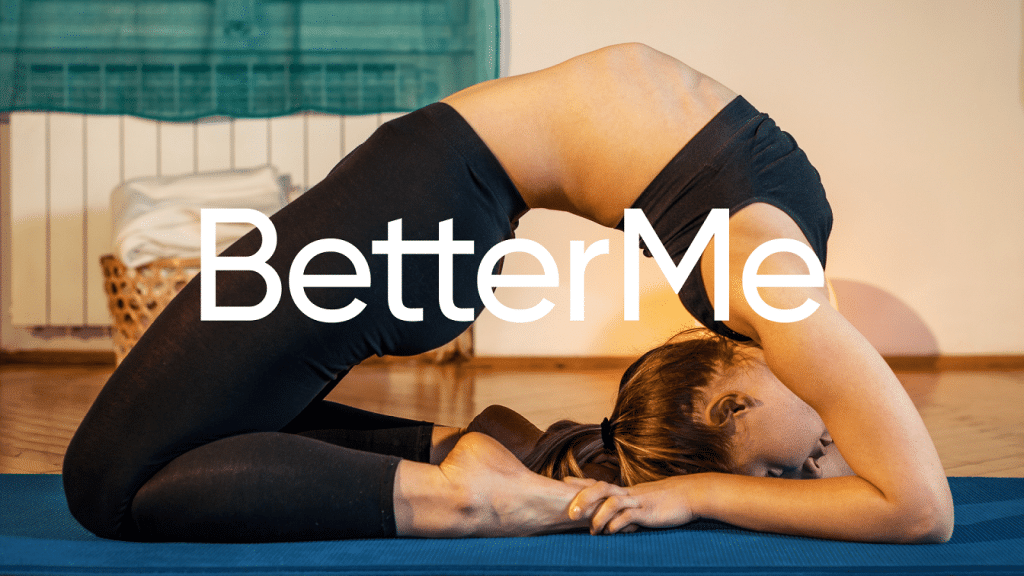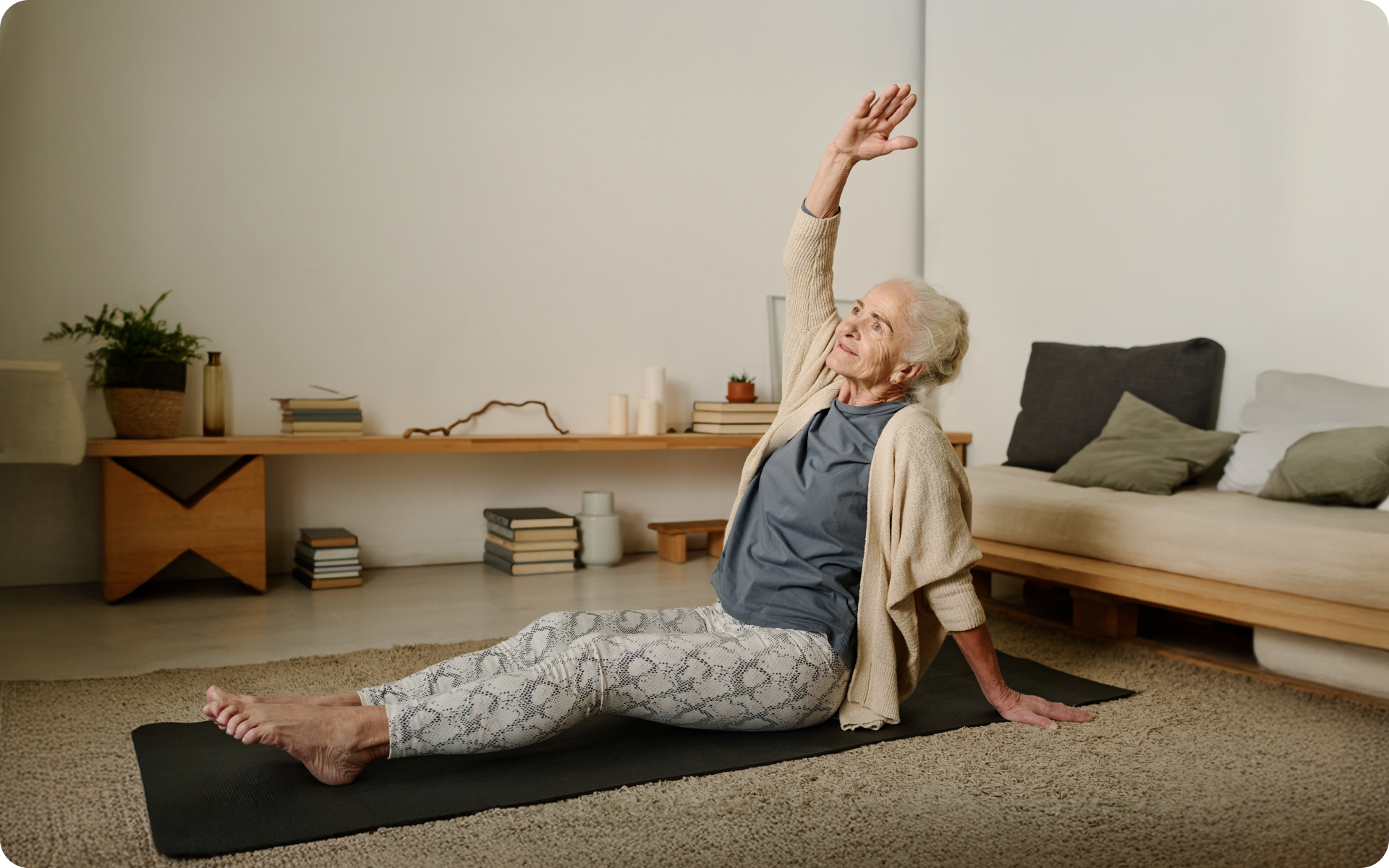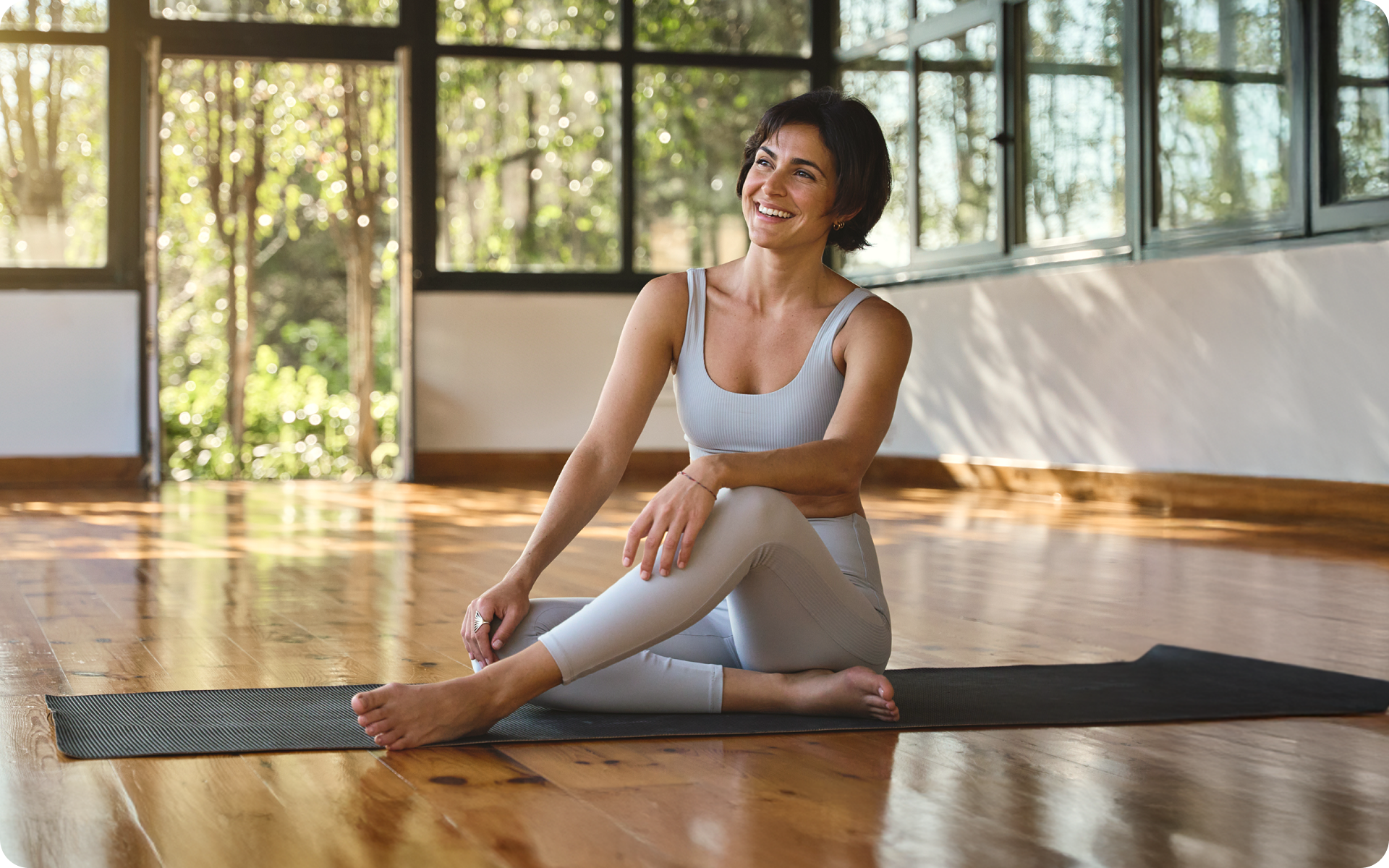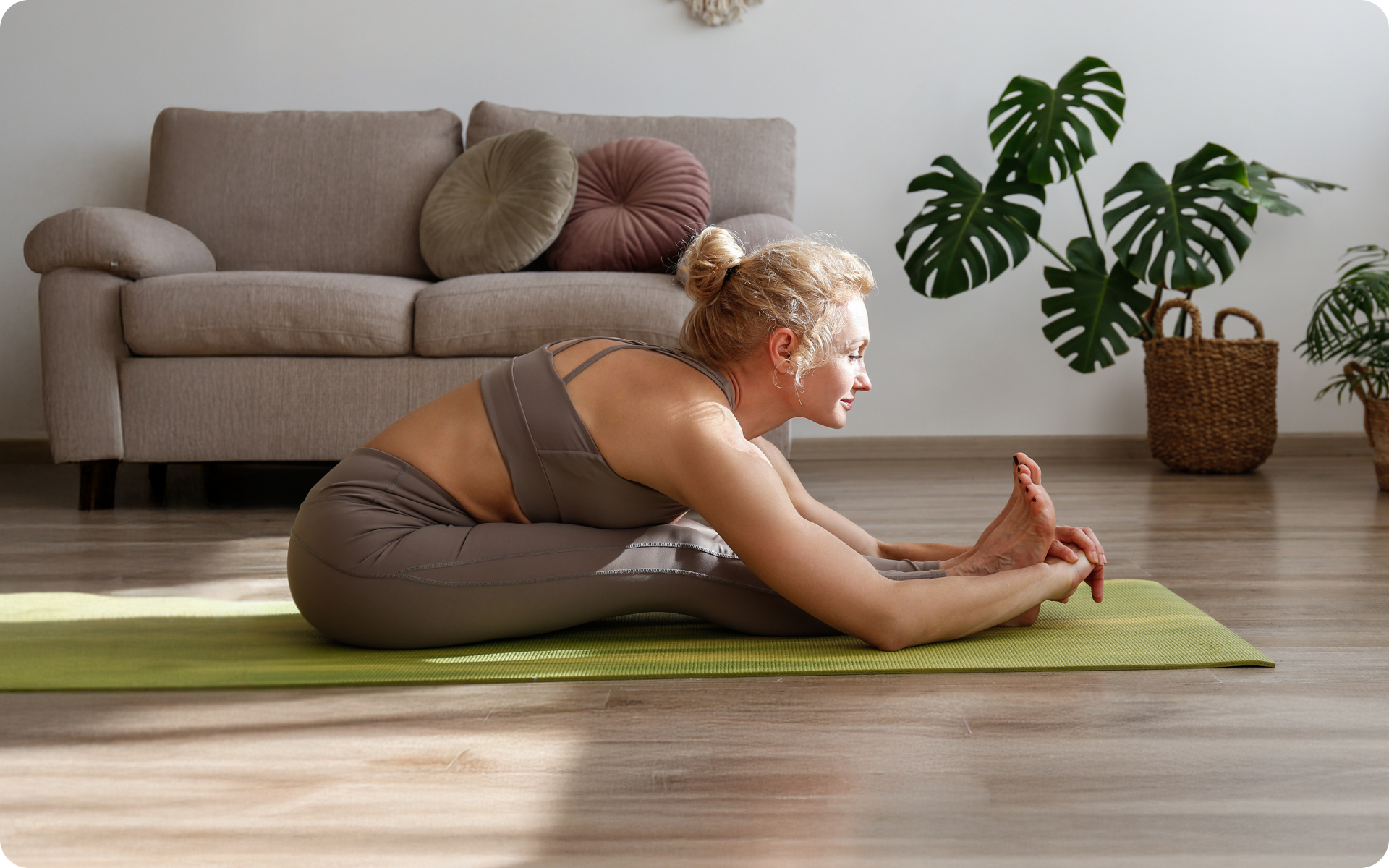Most traditional yoga classes can take up to more than 90 minutes. This leads to some people avoiding yoga entirely, thinking they don’t have time for it. Most people don’t know that they can get a quick workout with complete poses that open the body. This is where Tabata yoga comes into play. It is a form of high-intensity yoga that combines asana practice with high-intensity interval training (HIIT), referred to as Tabata.
Get your personalized
meal plan!
It may not be the easiest, but practicing Tabata yoga is one of the most efficient for burning calories. Since it involves full-body moves, there is a ton of force on the body, which translates to tons of calorie burn. This type of yoga will quickly take care of your body, but you will sweat for it like crazy. There are many benefits of Tabata yoga, and the fact that it is safer and takes less time has attracted many people to give it a try.
What Is Tabata Yoga?
It is a yoga style that brings together asana practice with High-Intensity Interval Training (HIIT), referred to as Tabata. The timed Tabata yoga approach combined with yoga asana improves physical strength and cardiovascular fitness, weight loss, stress reduction, and concentration (4).
Read More: Tabata Weight Loss: Action-Packed Workout That Leaves No Trace Of Excess Fat
History Of Tabata Yoga
Tabata yoga has its roots in Japan. Its history goes back to a study conducted by a Japanese scientist named Dr. Izumi Tabata, in collaboration with other researchers from the National Institute of Fitness and Sports in Tokyo. This study aimed to compare the results obtained from two participant groups (1).
In the first group, there was a one-hour moderate-intensity workout for five days per week for a duration of six weeks. The other group engaged in a four-minute high-intensity interval training (HIIT) for four days per week for six weeks.
The research established that high-intensity interval training greatly enhanced aerobic (cardiovascular) and anaerobic (muscular) systems. On the other hand, the long-lasting program that incorporated moderate exercises failed to achieve the same impressive result, and the results were minimal changes in participants’ anaerobic system (2).
There was a 28% increase in the anaerobic system in the second group, proving that short-term exercises may actually be effective and powerful. This new knowledge helped eliminate many stereotypes that had existed in the fitness industry.
Tabata is tough to perform and as such elements of yoga were mixed with it to make it a bit easier for the joints and untrained muscles. Since then, several variations of Tabata have been created to target different muscle groups.
Benefits Of Tabata Yoga
What does Tabata do in yoga? The major advantage of Tabata yoga needs no telling; a student will benefit from the program’s two elements without necessarily putting heavy stress on the body’s joints. Doing a Tabata workout will result in enormous benefits, including physical body strength, healthy weight loss, and cardiovascular fitness. Because you will be engaging in yoga moves, you will most definitely improve your mental well-being by reducing stress levels and maintaining calmness and the right concentration (5).
The major benefits of Tabata yoga include:
-
Training For A Shorter Time And Gaining Better Results
We have already established that regular yoga is lengthy, which may deter many people from doing it because it does not promise quick and effective results. So, how does Tabata differ from yoga? Tabata yoga does not require as much time as standard yoga. While that alone is enough to attract new students, it gets even better to know that this form of yoga works better than most regular workouts. Some of the results you can expect are to build your muscles while at the same time achieving relaxation because of the yoga poses.
If you struggle to even flirt with the idea of giving up your favorite foods or working out till your legs give way – BetterMe app is here to breathe a fresh perspective into the way you view the weight loss process! Check out the app and experience the fun side of fitness and dieting with BetterMe!
-
Less Pressure On Joints
Those who have even the smallest knowledge of HIIT will tell you that it is hard. Finishing a HIIT workout is no child’s play because it is challenging both physically and psychologically. It gets harder for people who are not used to any form of exercise, and doing Tabata may create pressure on joints and cause muscle pain because it is a type of HIIT.
On the other hand, Tabata yoga is quite friendly for fitness rookies whose end-goal is to practice HIIT workouts. It is the perfect starting point because when you compare it with other Tabata fusion exercises, the Tabata yoga is by far gentler on body joints and the back (4).
-
Increased Lean Body Mass
Regardless of the training method adopted, increasing muscle mass in the body remains the same. The pressure from every exercise causes small tears in the tissue, and these need to be repaired. In the process, tissue units of muscle come close to these little gaps.
It is a continuous process that eventually adds muscle tissue, thus contributing to muscle growth. When practicing a Tabata workout, this process is hastened because of the greater physical exertion and muscle activation. At the same time, there is simultaneous fat loss and muscle gain. The Tabata yoga calorie burn leads to a better lean mass to fat ratio due to the unique training style (7).
-
Improved Metabolism
Tabata yoga is still intense enough to increase the heart rate and accelerate metabolism. Improved metabolism is good for the body because it can contribute to faster fat loss that continues after the workout, and leading to a healthy lifestyle. Those seeking better results can look into Tabata yoga diet guidelines (3).
Tabata Yoga For Beginners
Tabata yoga is one of the perfect workouts for beginners to start their fitness journey. That said, even Tabata yoga has dynamic moves that may be challenging to a beginner. Those who are trying Tabata yoga for the first time are advised to start with easier versions of the workout and steer clear of versions, such as the Tabata exercises with a yoga ball.
The length of the Tabata workout usually varies from anywhere between 4 minutes and 45 minutes. Typically, the workout is designed to target specific body parts. It is good to go for general low impact Tabata workouts and then progress to specific routines such as focusing on abs and core strengthening (6).
Don’t make the mistake of thinking that Tabata yoga for beginners is easy as a pie. Your body will burn calories and work the targeted calories without injuring your knees, joints, and back.
Read More: Hot Yoga Weight Loss: Become The Fittest, Leanest, And Strongest Version Of Yourself
Tabata Yoga Workout
There are many types of Tabata yoga workouts. Some are designed for the 21-day and 30-day Tabata yoga challenge. It does not matter what type you opt for because they are all meant to tone the muscles and take care of the body.
Primarily, the aim is to do as many reps as possible (AMRAP) in a 20-second cycle. As easy as it may sound, the 20 seconds may seem to be lasting forever if you are doing extremely intense exercises. That is why there are 10-second rest periods. Each round ought to be repeated at least two to four times to achieve the best results for your body (4).
Some of the most effective Tabata yoga moves that require no equipment and can be done anywhere include the following:
-
Lunge To Forward Hop
- Take a step back with your right foot into a left leg lunge.
- Jump up on to the right leg as you kick your left foot up to the glutes with your heel.
- Jump back into the original left leg lunge position.
Do AMRAP for 20 seconds followed by 10 seconds of rest.
-
Crouching Push-Up
- Start with a high plank position and then go down into a push-up.
- As you push your chest away from the ground, bend your knees so that you step on your heels. Your arms should be straight, and your hands must not change their position on the ground.
- Shift your weight forward before returning to the starting plank position.
Remember to complete 20 seconds for AMRAP and 10 seconds for rest.
-
Lateral Lunge To Rotate Open
- Make a lateral lunge on your right leg but do it extremely slowly. Your hands must be on the ground, while your left leg is stretched on the side with the toe pointing upwards.
- Raise your left arm straight to point upwards vertically as you rotate your chest to the left. Return your hand to the ground.
- Move your hands to the left and change your foot as you shift your weight over to a left-side lunge. Move your right arm to point upwards as you rotate your chest to the right side.
- Put your hands on the ground and repeat the exercise for alternate sides.
Remember to complete 20 seconds for AMRAP and 10 seconds for rest.
-
Side Plank Toe Tap
- Begin with a high side plank position on your right hand, lift your left arm above the head with biceps touching your ear.
- Bring down your left arm as you lift the left leg straight so that they tap together just above the torso.
- Repeat from the beginning for alternate sides.
Remember to complete 20 seconds for AMRAP and 10 seconds for rest.
It is common practice to have one type of exercise done for the first four rounds and then a different exercise for the next four rounds. You are then advised to do a restorative yoga pose in the 10-second rest intervals so that your muscles can relax and be ready for the next round.
A 30-Day Tabata Yoga Challenge
It is one of the many 30-day fitness challenges that are very intense. There is no equipment required for this challenge in which you will be doing HIIT exercises for four weeks.
Each of the four weeks has four high-intensity exercises designed to make you experience a full-body blast you’ve probably never experienced. A normal Tabata workout fashion has four moves that last 20 seconds, then you rest for 10 seconds, but in this 30-day Tabata yoga, more rounds are added with each day.
For instance, you will do four rounds of four exercises on the first day, six rounds on the second day, nine rounds on the third day, twelve rounds on the fourth-day, AMRAP on the fifth day, and then rest or have low-intensity exercises on the sixth and seventh days. Below is a sample of a 30-day Tabata yoga challenge schedule:
Week 1
Week one will have workout exercises such as a squat to punch, push-up + hand/knee tap, ice skater to forward jump, and boat hold bicycles.
- Squat to punch. Stand with your feet shoulder-width apart, and toes turned outwards. Shift into a squat position and punch your right hand across your torso towards the left as you return to a standing position simultaneously. Alternate punches with each squat rep.
- Push-up with hand/knee tap. Do a push-up while crunching your right knee to your right elbow as you push up from the ground. Do the same for alternate sides.
- Ice skater to forward jump. Jump out to the right side, followed by a jump forward and back, then to the left. Repeat.
- Boat hold bicycles. Sit on the ground, place your hands behind the head, and then lift your legs in front of you. Twist your torso so that the opposite elbow touches the opposite knee. Repeat for alternating sides.
Whether you’re a workout beast or just a beginner making your first foray into the world of fitness and dieting – BetterMe has a lot to offer to both newbies and experts! Install the app and experience the versatility first-hand!
Week 2
The week two circuit exercises will include rotating sumo squat jumps, plank jack push-ups, forward jump + 2 to 1 jump back, and hollow hold to the knee.
- Rotating sumo squat jumps. Begin by standing with your feet wider than shoulder-width apart. Follow the move by rotating your body 45 degrees left as you squat and then jump back to the center. Next, rotate your body 45 degrees to the right as you squat. Jump back to the center and repeat as you alternate sides.
- Plank jack push-ups. Take a high plank position and bring your hands and feet out sideways to assume a star shape as you lower your body to the ground. Jump the hands and feet back to the high plank position. Repeat the same.
- Forward jump with 2 to 1 jump back. This circuit session starts with you standing with your feet shoulder-width apart. Make an explosive jump forward and then land in a squat position. Do a light jump back on the right foot as you bring your left foot down to a squat. Then jump on the left foot and bring your right foot down for a squat. Repeat.
- Hollow hold to the knee in. Lie on the ground facing upwards with your hands straight back behind your head, and then lift your feet. Move your right knee to the torso and sweep your arms to meet your knee. Return your leg and torso down on the ground, and then bring your left knee to your torso as you sweep your arms again to meet your knee.
Week 3
In week three, the HIIT exercises include forward star jumps, push-up to bridge open, lateral hop to the high knee, and hollow hold circle up to rotation.
- Forward star jumps. Stand and bring your feet together as you bend your knees. Put your hands between your legs and jump forward as you reach your arms up into a star shape. Jump back to the original position and repeat.
- Push-up to bridge open. Get into a push-up position and lower your body to the ground. Push back to a high plank/push-up position as you twist your torso to the right so that your right arm and leg are in the air. Return to the high plank position and do the same for your left side.
- Lateral hop to high knee. While standing, hop to the left side and quickly lift your knees to the chest to laterally hop back to the center. Hop to the right side and repeat.
- Hollow hold circles up to rotation. Sit on the ground, lift your arms straight back behind you and lift your legs. Raise your torso, so your knees touch your chest, and swing your hands to meet right in front of you. Twist your torso to make your hands touch the ground to the right side. Bring your hands to the center, then repeat while you alternate the sides.
Week 4
For the last week, there will be squat to knee drive and punch, push-up to opposite hand/toe tap, lunge switch to kick, and hollow hold to circle up in the last week.
- Squat to knee drive and punch. Stand with your feet shoulder-width apart, and your toes turned outwards. Get down into a squat position and punch your right hand across your torso as you lift your left leg to the chest. Switch sides and repeat the same.
- Push-up to opposite hand/toe tap. Get into a push-up position and lower your body to the ground. Kick your left leg across the torso to touch your right hand. Return to the original position and repeat.
- Lunge switch to kick. Move your left leg back into a reverse lunge. Then quickly switch your legs by kicking your right leg out in front. Move your right leg behind you into a reverse lunge position. Repeat.
- Hollow hold to circle up. Lie down on the ground with your arms straight behind you. Lift your legs and then raise your torso so that the knees touch your chest. Swing your hands to meet between your legs. Lower your back to the ground and repeat.
The Bottom Line
At first sight, Tabata yoga may seem unrealistic, especially because it is a blend of contrasting approaches. However, it has been proven to be effective for weight loss and fitness purposes. It is excellent for people who are keen on exercising and don’t have time to spend hours in the gym. It is extremely challenging for those who are new to working out, but as they get used to it, they will start appreciating the results.
DISCLAIMER:
This article is intended for general informational purposes only and does not address individual circumstances. It is not a substitute for professional advice or help and should not be relied on to make decisions of any kind. Any action you take upon the information presented in this article is strictly at your own risk and responsibility!
SOURCES:
- Effects of moderate-intensity endurance and high-intensity intermittent training on anaerobic capacity and VO2max (1996, pubmed.ncbi.nlm.nih.gov)
- Exercise Intensity and Energy Expenditure of a Tabata Workout (1996, ncbi.nlm.nih.gov)
- High-Intensity Intermittent Exercise and Fat Loss (2011, ncbi.nlm.nih.gov)
- The 4-Minute Fat-Loss Workout (n.d, webmd.com)
- What are the benefits of high intensity interval training (HIIT)? (2020, medicalnewstoday.com)
- Who are some of the best online personal trainers? (2020, medicalnewstoday.com)
- Yoga (2019, webmd.com)


